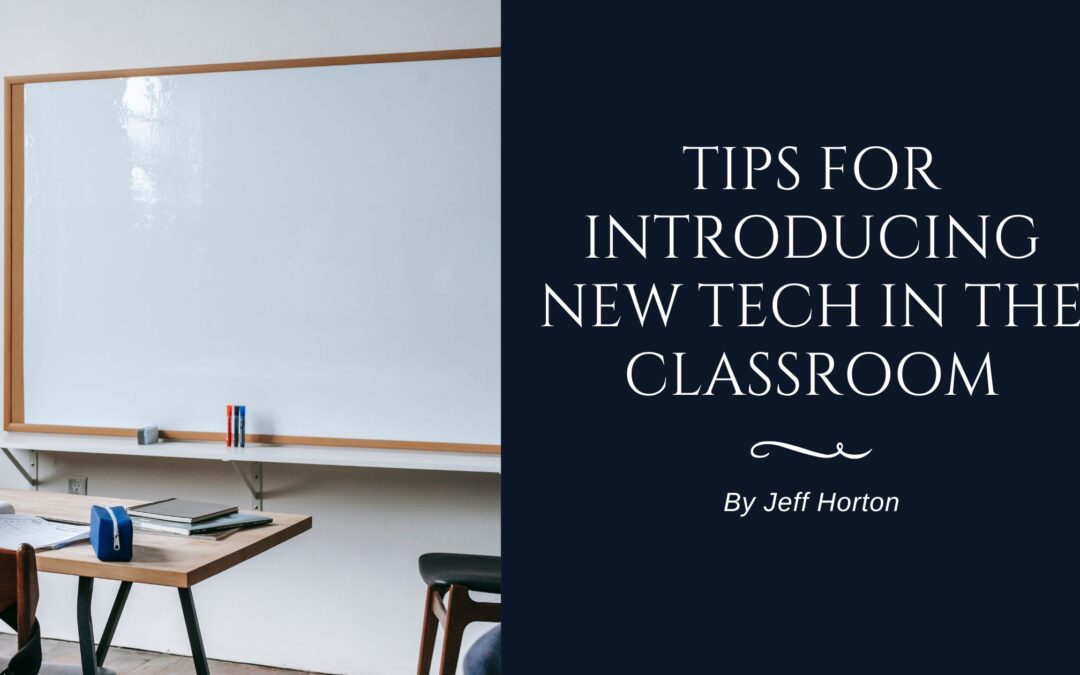Incorporating new technology in the classroom is a pivotal step toward enhancing educational experiences. It’s not just about staying up-to-date with the latest gadgets; it’s about leveraging these tools to facilitate better learning outcomes. However, the introduction of new technology can be challenging. Teachers must balance the excitement of new possibilities with the practicalities of practical implementation. New technology in educational settings affects training and support, outlines strategies for integrating technology with curriculum, highlights the significance of student engagement, and provides practical tips for a smooth transition.
The evolution of technology has dramatically reshaped the educational landscape. The way students learn has been transformed from chalkboards to digital whiteboards, textbooks, and tablets. This transition is driven by the need to equip students with skills relevant to a tech-centric world. Moreover, technology can cater to diverse learning styles, making education more inclusive and accessible. However, the integration of technology in education is not without challenges. Teachers often grapple with a lack of training, resistance to change, and the daunting task of aligning new tools with curriculum requirements. Additionally, schools must consider budget constraints and the digital divide. Understanding these challenges is essential in developing strategies for successful implementation.
Training and Support
Practical training and support are crucial for teachers to feel confident and competent in using new technology. Professional development should be ongoing, not just a one-off training session. This approach ensures that teachers stay abreast of evolving tech trends and learn how to integrate these tools into their teaching methods effectively. Schools should provide workshops, online courses, and peer mentoring opportunities. Additionally, having a dedicated tech support team to address technical issues promptly is beneficial. This support structure helps resolve immediate technical problems and encourages teachers to experiment with new tools without fear of failure. Furthermore, involving teachers in decision-making when selecting new technology fosters a sense of ownership and aligns tools with their teaching needs. This participatory approach ensures the technology adopted is relevant and valuable in their educational context.
Curriculum Integration
Integrating technology into the curriculum requires thoughtful planning and a clear understanding of educational objectives. It’s not about using technology for its sake but enhancing learning experiences. To achieve this, educators should identify areas within their curriculum where technology can add the most value. For example, interactive software can make learning more engaging in mathematics and science, while digital storytelling tools can enhance language and arts education. Teachers should consider how technology can facilitate more profound understanding, foster critical thinking, and encourage student collaboration when planning lessons.
Moreover, ensuring that technology use aligns with learning outcomes and assessment strategies is essential. This alignment ensures that the technology not only supports but also enhances the educational goals. Integrating technology should also include teaching digital literacy skills to students, preparing them to navigate the digital world responsibly.
Student Engagement
Maximizing student engagement is critical to introducing new technology in the classroom. Engaged students are likelier to be motivated, attentive, and invested in learning. Technology makes learning more interactive and personalized. For instance, gamification elements can transform routine lessons into exciting challenges, while virtual reality can provide impossible immersive experiences in a traditional classroom setting. Giving students a voice in how technology is used in their learning is also essential. Allowing them to suggest apps, websites, or tools they find interesting or helpful can make the learning experience more relevant to their interests and needs. Furthermore, technology paves the way for collaborative projects. However, monitoring and guiding how students use technology is crucial to ensure it remains an effective learning tool rather than a distraction.
Introducing new technology in the classroom is a multifaceted process that requires careful planning, ongoing support, and a focus on enhancing learning outcomes. By providing adequate training and support, integrating technology with the curriculum effectively, and engaging students actively, educators can leverage technology to its fullest potential. It’s about creating an environment where technology is a bridge rather than a barrier to learning. Embracing these strategies can transform the classroom into a dynamic and interactive space, preparing students for a future where technology is integral to life and work. The journey towards effective technology integration is continuous and evolving, but with the right approach, it can be gratifying for both teachers and students.
